Top 10 Most Beautiful Historical Sites in Switzerland
Boasting snow-tipped mountains, glassy Alpine lakes, lush valleys dotted with picturesque villages and thriving cities, Switzerland may be a small country but ... read more...it offers a large wealth of historic sites for you to visit. Among these notable locations are Vindonissa, the Palais des Nations and Chateau de Chillon, each telling part of Switzerland’s history of Roman invaders, medieval counts, humanitarianism and more. To help you decide where to start, Toplist picked out the most beautiful historical sites in Switzerland for you to explore.
-
Grossmunster is a famous medieval church in Zurich with a history dating to Charlemagne and one of the most beautiful historical sites in Switzerland. Indeed, it is said that the Frankish king built the first incarnation of Grossmunster on the site where he discovered the graves of the city’s patrons, Felix and Regula. However, the Romanesque style version of Grossmunster we see today, with its two iconic towers, was built later from around 1100 until 1220. It was here in Grossmunster in the 16th century that Huldrych Zwingli and Heinrich Bullinger started the Swiss-German Reformation.
Today, visitors to Zurich flock to see Grossmunster’s Romanesque crypt, its museum dedicated to the Reformation, and its striking windows. Grossmunster is situated near the banks of the river Limmat. It was constructed on the site of a Carolingian church, which was, according to legend, originally commissioned by Charlemagne after his horse fell to its knees over the tombs of Felix and Regula, Zurich’s patron saints. The present church was constructed from 1100 until its inauguration in around 1220. It was originally a monastery church, vying with the Fraumunster across the Limmat throughout the Middle Ages.
Today, visitors can enjoy a the church as both a tourist attraction and a place of worship. There are a few features that are particularly worth seeing. These include the glass windows by Sigmar Polke, the Romanesque Crypt, the Romanesque capitals in the church and cloister, the stained glass windows by Augusto Giacometti, the bronze doors by Otto Munch and the Reformation museum in the cloister. Visitors should also take the 187 stairs from the nave up to the tower vantage point, from where visitors have panoramic views over the Zurich rooftops and lake as well as majestic Alpine summits on the horizon.
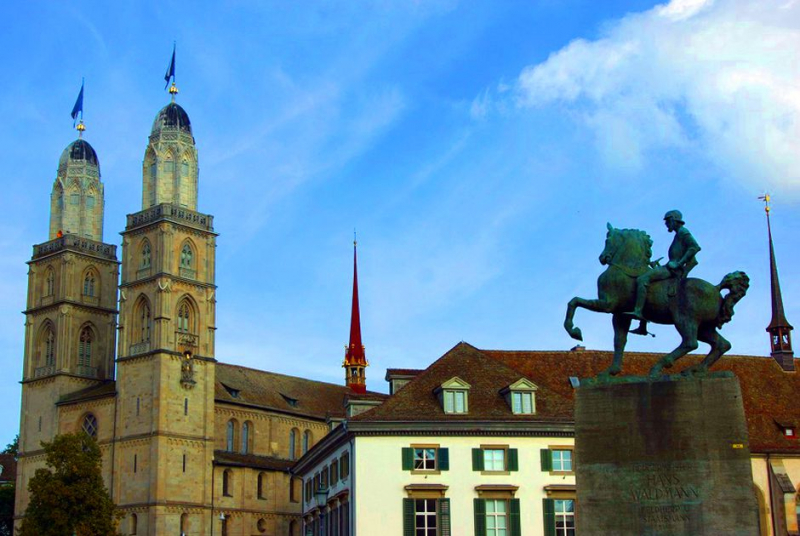
Lovetravel 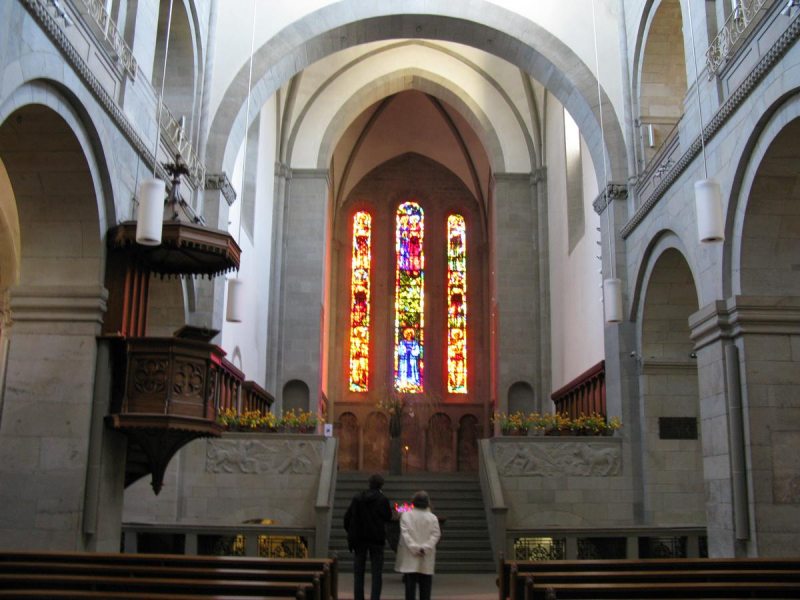
Structurea -
Chateau de Chillon – also known as Castle Chillon – is a picturesque fort which uses both Lake Geneva and a moat created between a small island and the mainland for defence. First mentioned between 1160 or 1005 AD, it is along the shoreline of Lake Geneva near Veytaux, Switzerland. Through the centuries it has been home to the Counts of Savoy as well as Lord Byron.
Chillon began as a Roman outpost, guarding the strategic road through the Alpine passes. First construction of the castle itself dates back to the 10th century, though it is likely that it was a military site before that date: objects dating from the Roman and Bronze ages were discovered during 19th century excavations. The oldest parts of the castle haven’t been definitively dated, but the first written record of the castle is in 1005. From the mid 12th century, the castle was used a summer house for the Counts of Savoy, who kept a fleet of ships on Lake Geneva.
At the end of the 19th century, structures were set up for scientific and historically accurate restoration project of Chillon. The restoration project was internationally acclaimed for its rigour and attention to detail, with a combination of knowledge and extensive research heavily influencing its development. Historically, Chillon has attracted romantic writers such as Jean-Jacques Rousseau, Victor Hugo, Alexandre Dumas, Gustave Flaubert, and Lord Byron. Today, Chillon is amongst the most visited castles in Switzerland and Europe, with 42 rooms and an accompanying audio guide making it a hugely worthwhile visit.
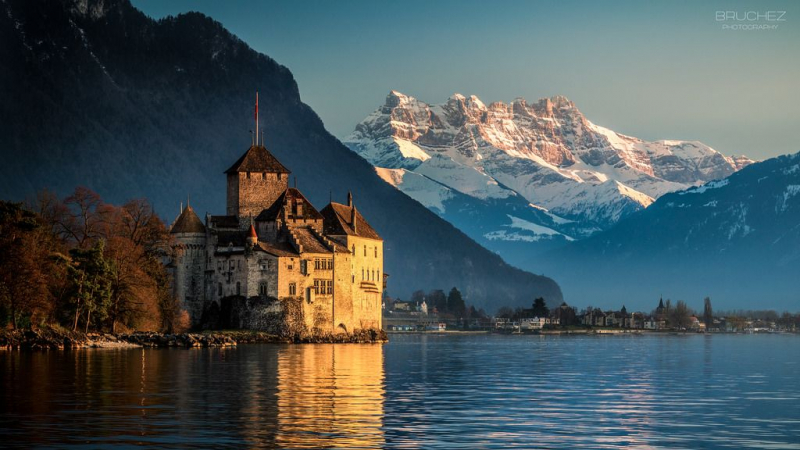
Pinterest 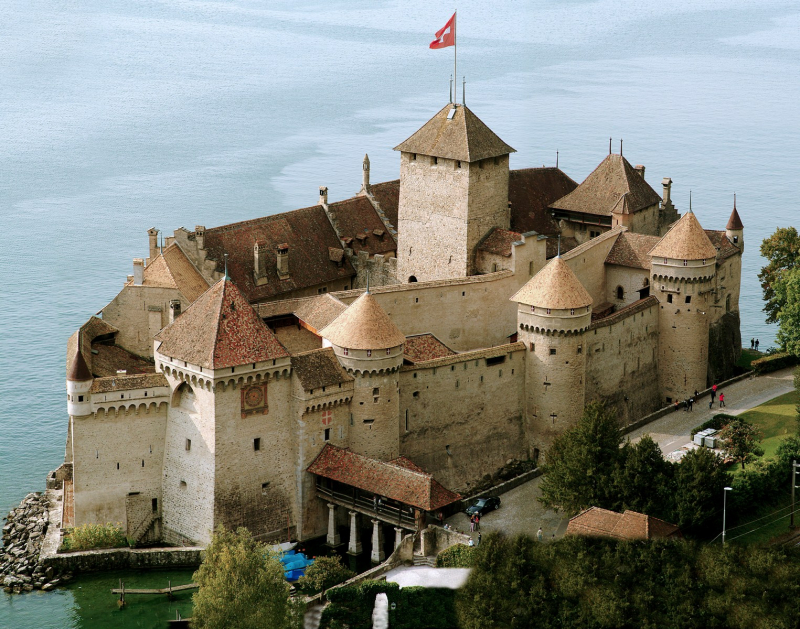
Wikipedia -
Originally begun sometime around 1160 and completed in 1260, St. Peter’s Cathedral would undergo several incarnations. In particular, whilst the original builders of St. Peter’s Cathedral adorned it with ornate and lavish decorations and ornaments, following the Reformation in the mid-16th century, this was significantly toned down. Indeed, today, St. Peter’s Cathedral can be described as austere.
Significantly, St. Peter’s Cathedral actually played an important role in the Reformation, it being from its pulpit that John Calvin preached about Protestantism. His chair can be viewed there. Visitors who tour St. Peter’s Cathedral can still see some traces of the site’s onetime grandeur in its stained glass windows as well as in the 15th century Chapel of the Maccabees, which has been restored. There is also the opportunity to climb the cathedral towers for great views.
In addition to the current incarnation of St. Peter’s Cathedral, there are the archaeological remains of two earlier churches, once dating to the 11th century, the other to the 4th, both visible next to now. Today, the Cathedral is occasionally rented out for concerts. There is no entrance fee for the St. Peter’s Cathedral. During the visit you’ll be able to climb the 157 steps of the towers leading to the top of the Cathedral. Visitors will also discover magnificent architectural treasures – an emblematic symbol of the Reformation.
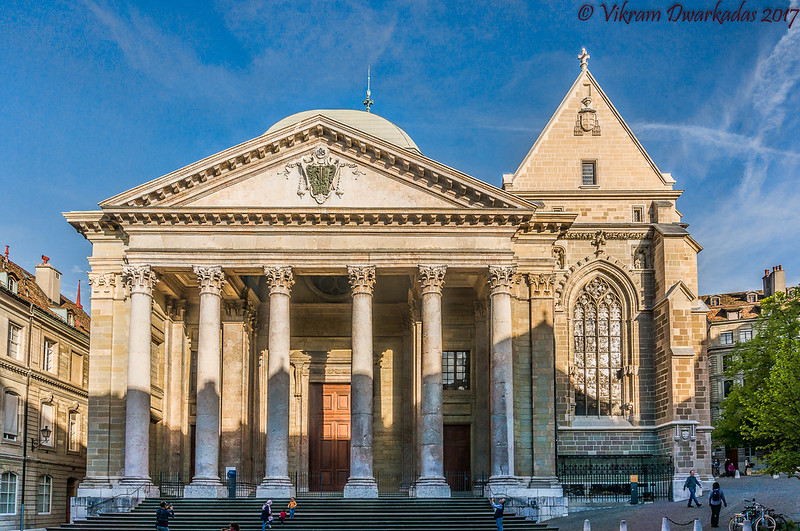
Spotting History 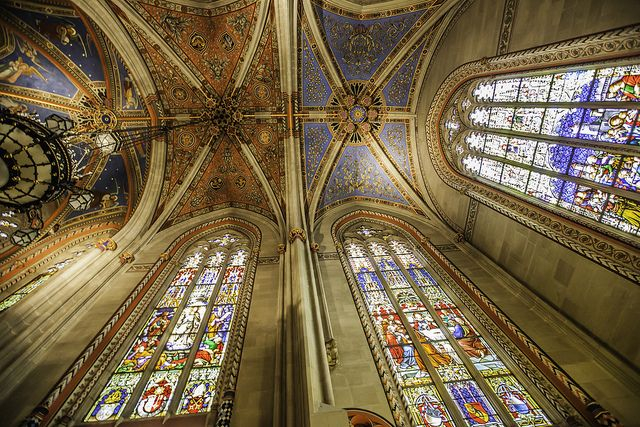
Pinterest -
The Palais des Nations (Palace of Nations) is the home of the United Nations office in Geneva, Switzerland. A hugely busy building, it hosted more than 10,000 intergovernmental meetings in 2012 alone. The Palais was built between 1929 and 1938 after a competition was held for its design. It was built to serve as the headquarters of the League of Nations, and at the time of its completion, it was the second-largest building complex in Europe after Versailles. It overlooks Lake Geneva and has a clear view of the French Alps.
The Palais des Nations in Geneva has been the official European headquarters of the United Nations since 1966 – second in importance only to New York. Prior to this, the Palais des Nations was originally home to the League of Nations, leading to it also being known as the Volkerbund or ‘League of Nations’ Palace. Now at a length of some 600 metres, the grand Palais des Nations is where one finds several important elements of the UN, including its Office of the High Commissioner on Human Rights and Human Rights Council.
The facility is an outstanding testimony to 20th century architecture. Situated in the beautiful Ariana park, it is a popular tourist site both for its historical and political significance and for its scenery. Guided and thematic tours of the Palais des Nations are available to the general public, who can see important places such as its 2,000-seater assembly hall – the largest room in the palace – and the Council Chamber, as well as learning about the history and role of the UN.
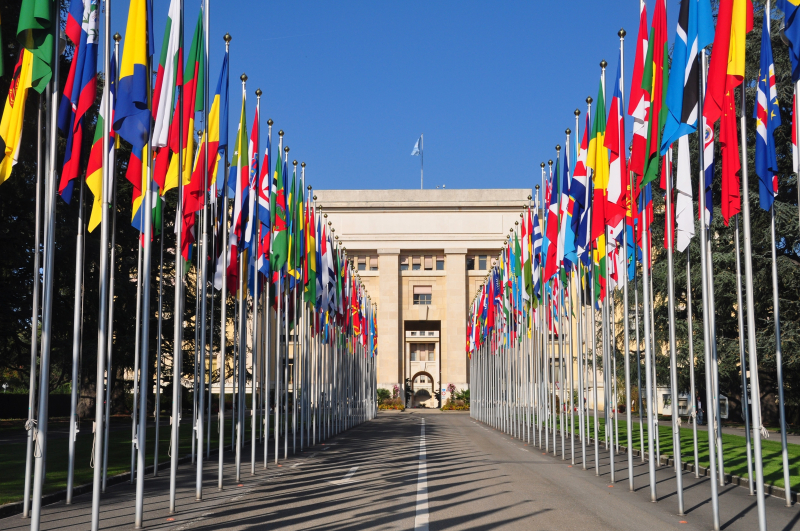
ArrivalGuides.com 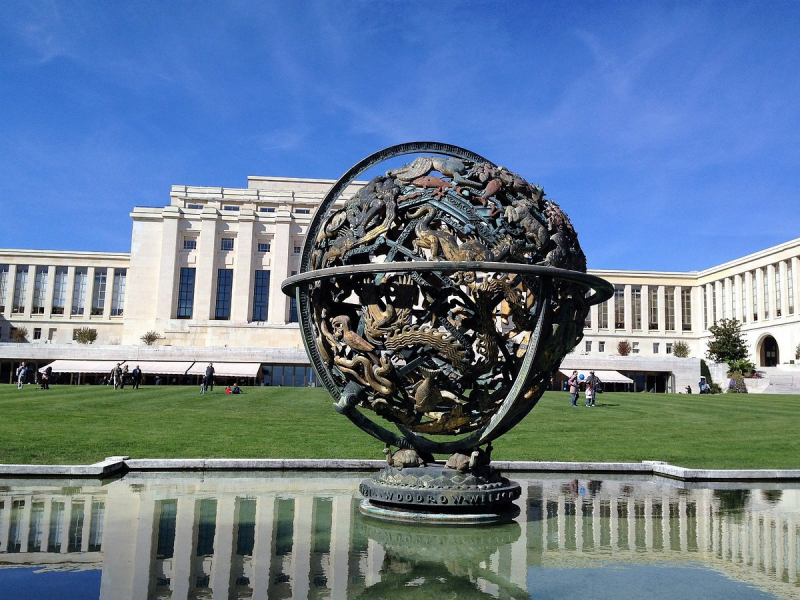
Geneva Tourism -
Fort Vallorbe, also known as Fortress Vallorbe and the Pre-Giroud Military Fort, was a World War Two artillery fort which had great strategic importance defending the Col de Jougne Pass as well as the Swiss-French border. Above ground, all that is seen of Fort Vallorbe are 3 buildings – underneath is another story.
Construction of Fort Vallorbe began in 1937 and was completed in 1941. Hewn out of the surrounding rock, Fort Vallorbe was built into a network of underground tunnels including accommodation, a hospital and munitions storage, all with air filtration. These self-sufficient bunkers accommodated up to 200 men by 1945. The fort covered the Swiss end on the Mont d’Or railroad tunnel and the Joux valley, and was armed with three artillery blocks for 75mm guns and two machine gun blocks. All were camouflaged; the artillery blocks as rock formations and the machine gun blocks as houses. Deactivated as a military post in the 1980s, ever since Fort Vallerbe has been operated as a museum.
Today, the bunkers can be visited during the summer and offer a variety of exhibits about Fort Vallorbe, its past and for the military history enthusiast, its weaponry including missile launchers, machine guns and cannons. Inside, the main lift still works and the bunkers look poised to welcome 200 soldiers once again. Just remember to dress up warmly as even in the heat it can get quite cold within the fort itself. Outside, the huge artillery guns still swivel around. Use the telescopic sight to aim them across the valley.
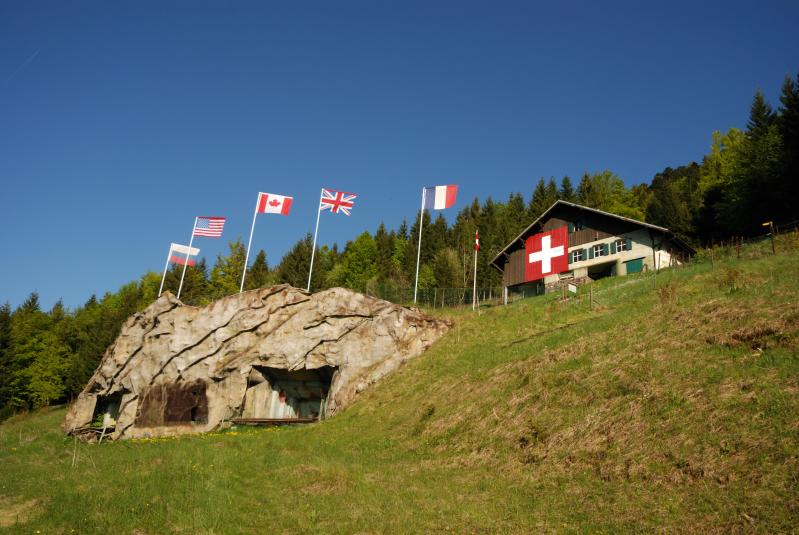
www.j3l.ch 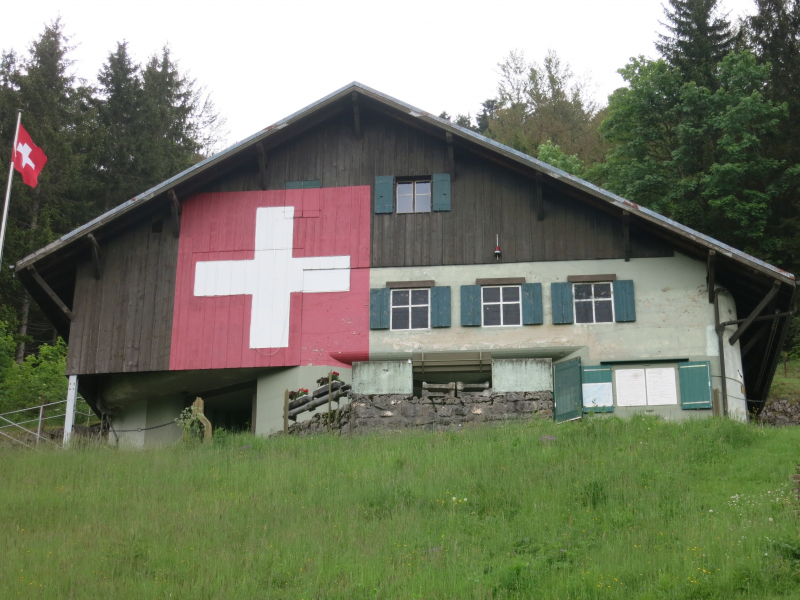
Mapcarta -
Stretching for 100 metres, the Reformation Monument (Monument de la Reformation) in Geneva is a tribute to the Protestant Reformation and one of the most beautiful historical sites in Switzerland which occurred in the 16th century. It was in 1909, on the 400th anniversary of the birth of Jean Calvin, that construction of the Reformation Monument began, with its location adjacent to the city’s historic defensive walls.
During the Reformation, Geneva in Switzerland became the heart of Calvinism named for Jean Calvin, a French pastor, theologian and reformer, founded the University of Geneva. The inscription of “Post Tenebras Lux” is the Latin motto of the Reformation, meaning “After the darkness, light.” The wall was vandalised by an LGBT activism group in 2019, who poured rainbow-coloured paint on the statues.
Today, the pale stone wall framed by trees within Bastion Park remains an ongoing reminder of the great players of the Calvinist Protestant Reformation in Europe. The monument is an unmissable part of the park, once part of the city walls and a symbol for the Calvinist University of Geneva, and is a peaceful spot to escape the hubbub of the city any time of day.
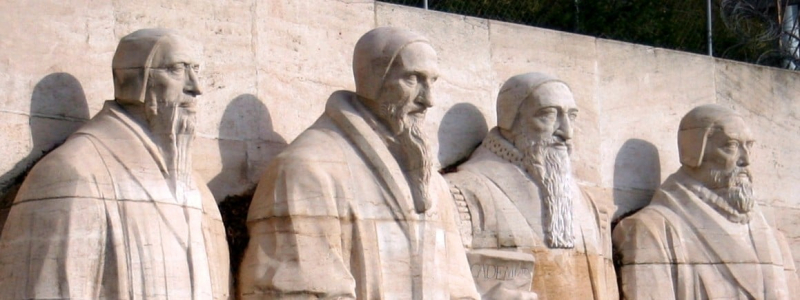
The Huguenot Fellowship 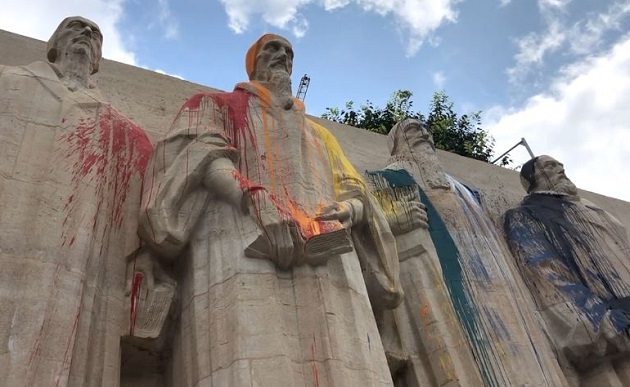
Evangelical Focus -
Peterskirche in Zurich, Switzerland is a medieval church famed for having Europe’s largest clock face. Whilst a church has stood on the site of Peterskirche in Zurich since the 9th century, the church itself has undergone several transformations and mostly dates from the 13th century, and is revered for its mixture of architectural styles, including the Baroque, Gothic and Romanesque.
The site of Peterskirche was originally the location of a former Roman castle, built upon the Temple to Jupiter. After the fall of the Roman Empire, an early Christian church was built upon the sacred site during the 8th or 9th century, which was later replaced by a Romanesque style church around 1000 AD. Once again, this structure was updated and replaced by a later Romanesque church. Since 1234, Zürich had been governed by an aristocratic council consisting of nobility and influential merchants. The city’s mayor was selected from this group and appointed by the abbess of the powerful Fraumünster abbey for influential daughters.
Today, you can see the largest clock face in Europe at 8.64 metres in diameter, towering over the city. A great view can be found from Lindenhof hill. Within the tower are 5 bells dating from 1880 – the largest of which weighs in at 6 tons. For free you can visit the interior of the large church, with two tiers of seating along the walls and a large pulpit above 2 arches at the front for sermons. Whilst looking around, see if you can find the gravestones of Brun and of J. C. Lavater, pastor between 1778 to 1801, set into the church wall. The church is open all day between 8am and 6pm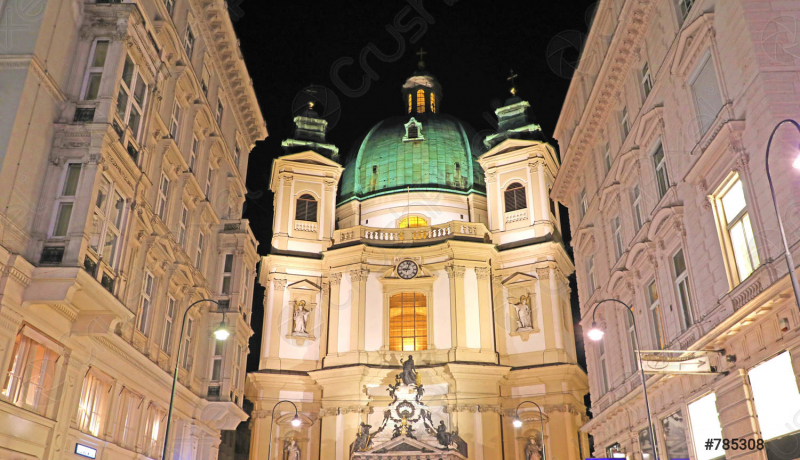
Crushpixel 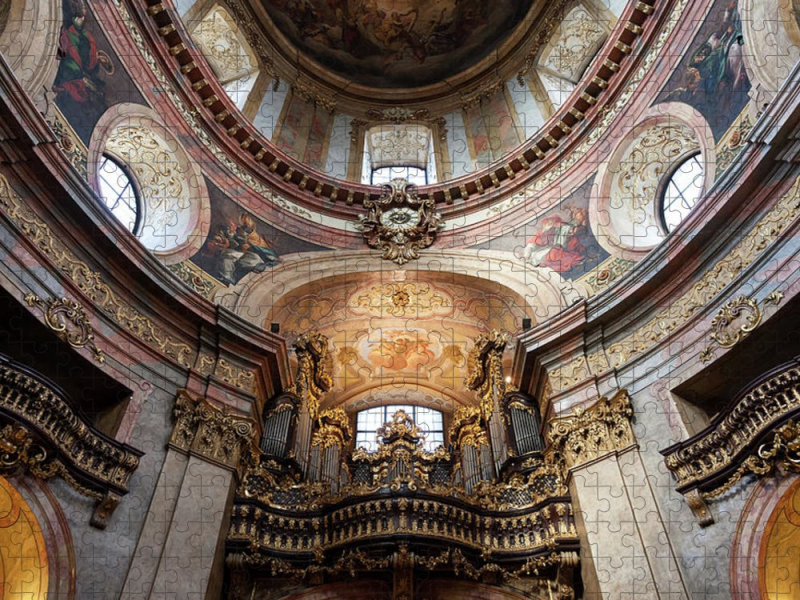
Puzzles -
Gruyeres Castle in Switzerland is a picturesque medieval castle which was the seat of nobility for centuries. Today, the hilltop structure is a heritage site of national significance and is one of the most beautiful historical sites in Switzerland. Built in the 13th century as a typical square fort found in the Savoy region of France, Gruyeres Castle was called home by some 19 of the counts of Gruyeres, a tradition only ended in 1554 upon the bankruptcy of the last of these counts – Michel. At this point, Gruyeres Castle along with the rest of the Count’s lands were distributed between his creditors, these being the towns of Berne and Fribourg.
As a result, from 1555 Gruyeres Castle was used as the seat of the Fribourg bailiffs and later the prefects, until 1848. For around a century after that, Gruyeres Castle was the summer home of the Balland and Bovy families, finally becoming a museum in the 20th century. You are welcome to explore the castle on your own with the free handout guide (available in 12 languages) or watch the 20 minute multimedia show (included in admission price). Visitors to Gruyeres Castle can also tour Gruyeres’ museum, learning about its history and enjoying its astonishing architecture.
There are also temporary exhibitions on site. For those keen to be fully immersed in Gruyeres’ history, storytellers in medieval costume will recount the legends of the castle and the region on guided walks and for younger visitors there is a thrilling treasure hunt on offer. Wandering around the richly furnished halls or beautiful ordered gardens, you will not regret visiting to take in the views.
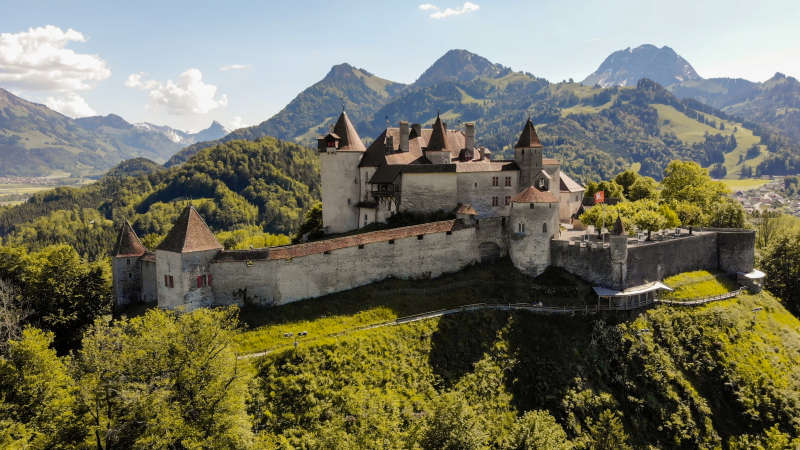
REGION 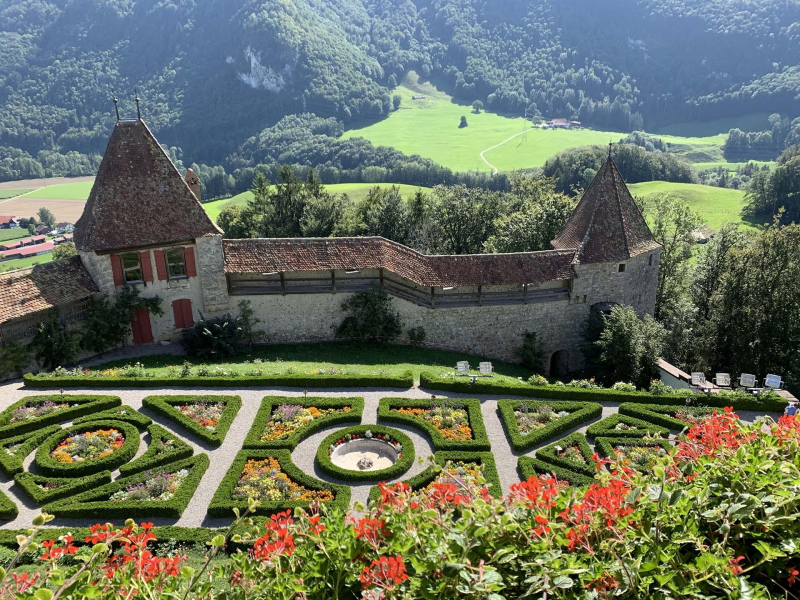
Tripadvisor -
Einsiedeln Abbey is a picturesque Baroque style Benedictine monastery with an illustrious history dating to the 9th century AD. Founded in 835 AD by a monk called Meinrad, Einsiedeln Abbey flourished into a cultural hub and a popular pilgrimage site. Its chapel is even said to have been consecrated by Christ himself in 948 AD. Today, Einsiedeln Abbey is home to an important statue known as the Black Madonna as well as a winery and a theological school.
The monk Meinrad was educated at the abbey school of Reichenau, where he became a monk and ordained priest. Meinrad moved to Mount Etzel, but died on January 21 861 AD when he was killed by some robbers thinking the hermit had valuable treasures. From that point onwards, the location was always inhabited by a hermit emulating Meinrad. One such hermit, Eberhard, founded a monastery there in 934 and became its first abbot.Allegedly, the monastery was consecrated miraculously by Jesus Christ himself in 948 – an event investigated and claimed by then pope, Leo VIII. The third abbot was made prince of the Holy Roman Empire by Emperor Otto I and in 1274 the abbey was made an independent principality by Rudolf I of Germany. The abbey itself was reconstructed several times after numerous fires – entirely redone in the Vorarlberg Baroque style between 1719 and 1735. The main facade is flanked by 2 ornate towers and the interior reflects the exterior grandeur, covered in frescoes and stuccos.
Einsiedeln Abbey still stands in its magnificence at the intersection of the main road beside a large town square. Open all day, be sure to visit the Chapel of Grace, designed in the Neo-classical style which contains the venerated Black Madonna statue and the reliquary of Saint Meinrad. The abbey still functions as such, with 55 monks teaching around 350 students as well as serving local parishes. While at Einsiedeln Abbey, you should sample some of the wine made on-site and visit the small gift shop.
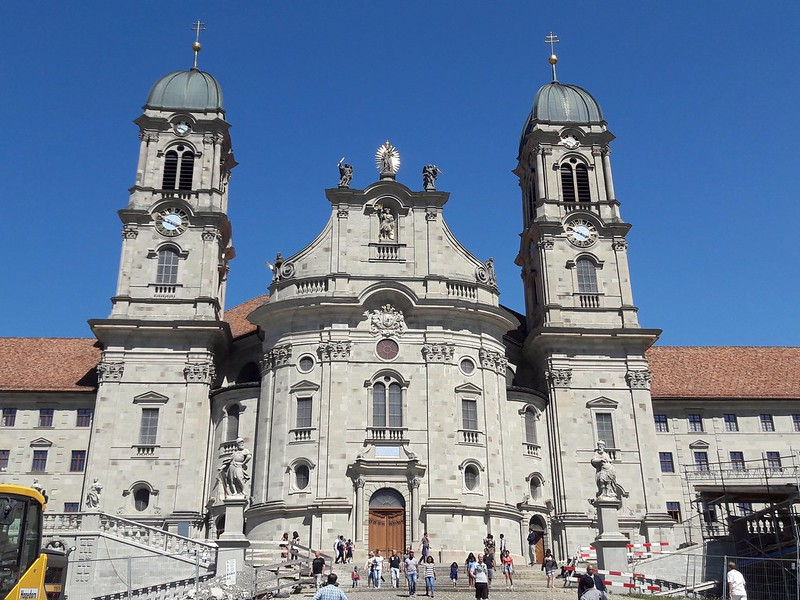
Spotting History 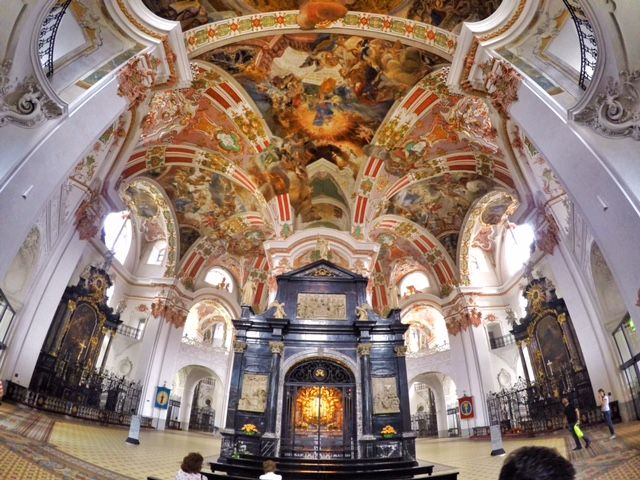
Pinterest -
Vindonissa is the site of a former Roman legionary camp which includes the ruins of an amphitheatre and an aqueduct. First developed under Emperor Tiberius, various remains and excavations now survive in the modern-day town of Windisch, Switzerland, and are listed as a heritage site of national significance. Today, an interesting ‘Legionnaire Trail’ audioguide walk for visitors of all ages and interests follows daily life as a legionnaire through the ruins and sights of the Vindonissa camp. Otherwise, most sites can also be visited for free and have noticeboards with explanatory text.
The first settlement at Vindonissa was a 1st century BC Helvetii fortified village, nestled between the Aare and Reuss rivers. Protected by a wood and earth wall stretching 350 metres-long and a 7 metre-deep trench, the village came under Roman control after the 58 BC conquest by Julius Caesar, or the 15 BC conquest of the Alps. Nevertheless, by 15 BC a small guard post had been established at Vindonissa and was likely followed by the legion camp around 15 AD.
Today, a 1.2 mile-long Roman underground canal still provides water to the fountain at the beautiful Königsfelden Monastery (located in the heart of the ruins and founded in 1308), illustrating the legacy of Roman settlers across Europe. Along with the ‘Legionnaire Trail’, there is also a small shop and cafe near the recreated Roman camp next to Königsfelden Monastery at the end of the ‘Legionnaire Trail’, and the site often hosts events such as Roman festivals, and live action battles from time to time. In addition to the open-air sites in Windisch there is also a Roman museum in Brugg.
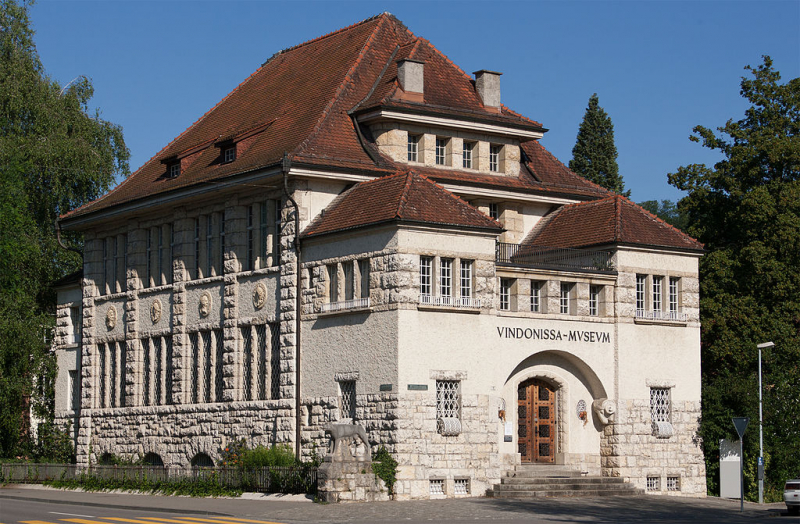
Sportting History 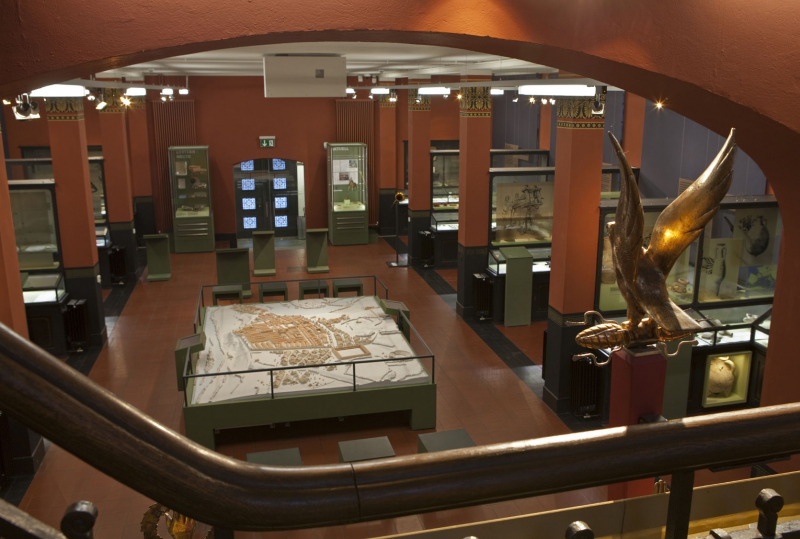
Discover































